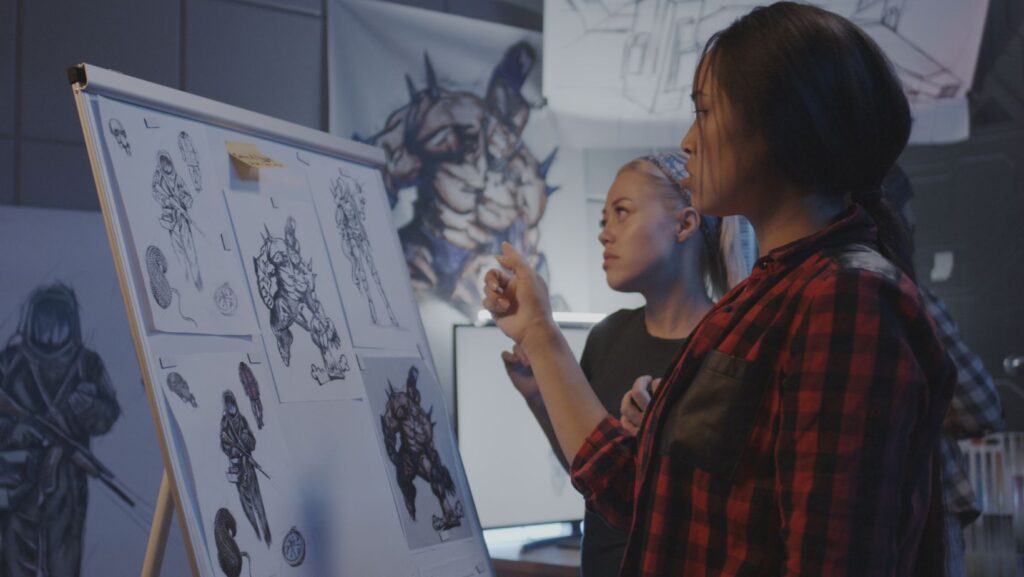As a seasoned game art designer, I’ve delved into the captivating world where creativity and technology converge to bring virtual worlds to life. The realm of game art design is a dynamic space where imagination knows no bounds, and every pixel holds the potential to evoke emotion and wonder in players. From character creation to immersive environments, game art design is the backbone of any successful gaming experience.
In this article, I’ll be sharing insights, tips, and trends in the ever-evolving landscape of game art design. Whether you’re a budding designer looking to hone your craft or a seasoned pro seeking inspiration, join me on a journey through the intricacies of color theory, composition, and visual storytelling in the realm of gaming. Let’s unlock the secrets behind creating visually stunning and engaging worlds that leave a lasting impact on players.
Importance of Game Art Design
Enhancing User Experience
From intricate character designs to captivating environmental landscapes, game art design plays a crucial role in enhancing the overall user experience. It creates a visually engaging world that immerses players in the game’s narrative, making every element feel cohesive and compelling.
Setting the Tone and Atmosphere
The artistic choices made in game art design are instrumental in setting the tone and atmosphere of the gaming experience. Whether it’s a vibrant and whimsical world or a dark and ominous setting, the visuals convey emotions, establish moods, and deeply resonate with players on an emotional level.
Creating Visual Identity
A strong visual identity is key to making a game stand out in a crowded market. Through distinctive art styles, color schemes, and graphic elements, game art design helps establish brand recognition and ensures that the game is memorable and recognizable to players.

Game Art Design
Color Theory
Color theory plays a crucial role in game art design as it evokes emotions and sets the mood of the game. Harmonious color palettes can create visually appealing environments, while contrasting colors can highlight important elements. Understanding color psychology helps in conveying themes and guiding players’ emotions.
Composition Techniques
Effective composition techniques ensure that game environments are visually balanced and engaging. Rule of thirds helps in creating dynamic and visually pleasing layouts. Leading lines direct the player’s gaze and enhance the flow of the game. Mastering composition techniques enhances the overall visual experience and guides players through the game world.
Tools for Game Art Design
Graphic Design Software
When it comes to game art design, utilizing Graphic Design Software is essential. Programs like Adobe Photoshop and Procreate offer a wide range of tools for creating digital art, textures, and sprites. These software options provide flexibility and advanced features to bring game concepts to life with precision and creativity.
3D Modeling Programs
For 3D modeling, industry-standard software like Blender and Autodesk Maya are go-to choices. These programs enable me to sculpt detailed 3D models, characters, and environments for immersive gaming experiences. With robust toolsets and rendering capabilities, 3D modeling programs elevate the visual quality of games and allow for intricate designs.

Trends in Game Art Design
Minimalistic Design
Minimalistic design is gaining popularity in game art design due to its clean and sleek aesthetic. It focuses on simplicity and minimal use of colors and details.
- Provides a modern and elegant look to games.
- Emphasizes on essential elements, enhancing user experience.
- Reduces visual clutter and distractions, leading to a more focused gameplay.
Pixel Art Revival
Pixel art, a classic art style from early video games, is making a comeback in modern game art design.
- Evokes nostalgia and retro vibes for players.
- Offers a unique and charming visual appeal.
- Allows for creativity within the constraints of limited pixels, sparking innovation.
Game art design is constantly evolving, with trends like minimalistic design and pixel art making a significant impact on the industry. The shift towards clean and sleek aesthetics in minimalistic design enhances user experience by focusing on essential elements. Similarly, the resurgence of pixel art taps into nostalgia while offering a visually captivating experience. These trends not only cater to the preferences of gamers but also drive revenue growth for developers. Embracing these design trends can set a game apart in a competitive market, appealing to a wide audience and creating memorable gaming experiences.

